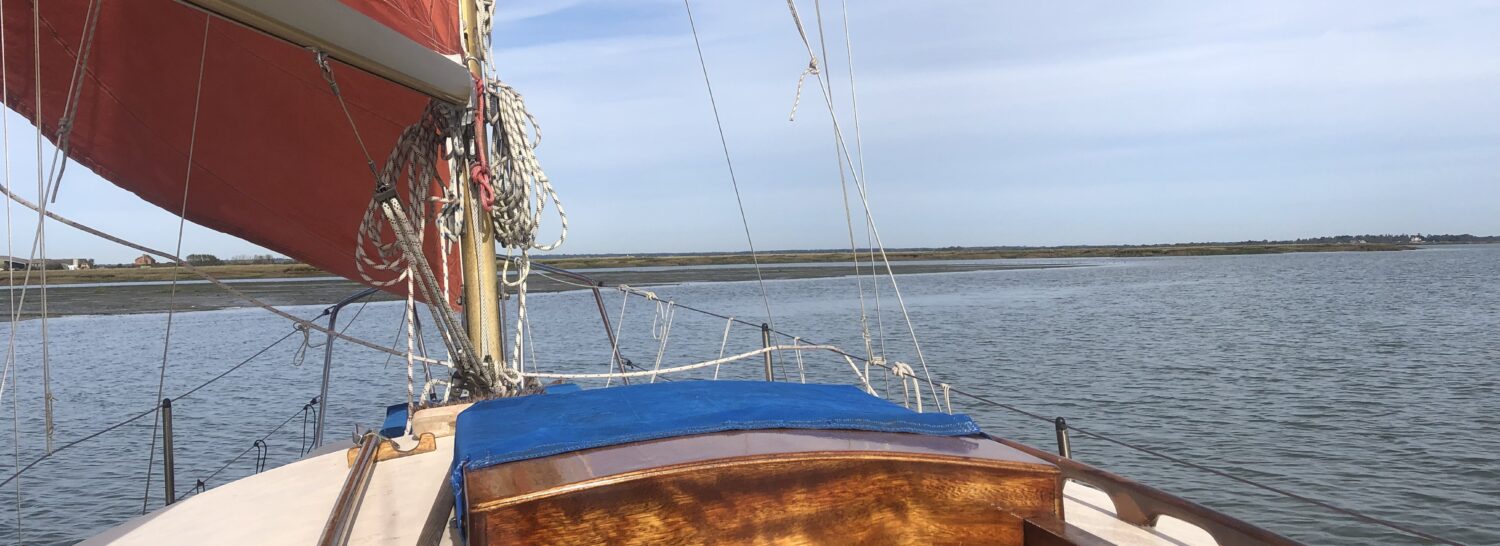Following on from my last post: http://nickardley.com/ditch-crawler-and-mate-prepare-for-whimbrels-lift-out/ The plan to lift Whimbrel was put into operation some days before the Corona Virus (Covid 19) restrictions began to be applied. We had, however, been carrying out our own ‘isolating’ procedures for quite some time as certain people were deemed more vulnerable, however it transpired that my prostate cancer treatment is not a cause for concern in regard to any added risk. Which was welcome news.
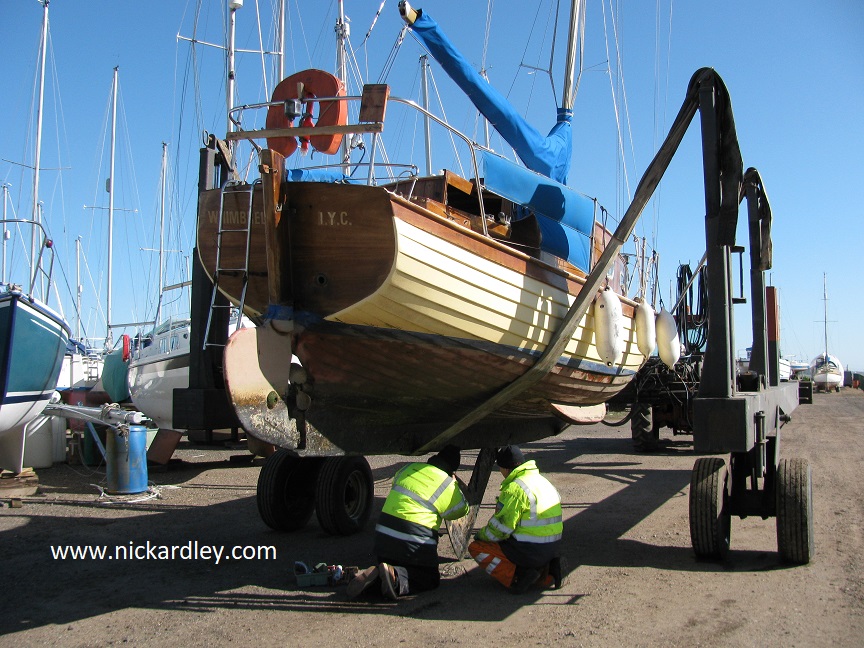
So, on the appointed day the boat came ashore. The centre plate lift wire and its pin were renewed before Whimbrel was bedded down in a spot clear of other craft for the ‘slurry’ blast of her bottom.
I had agreed the job with Willpine Blasting Ltd, based on Canvey Island, many weeks previously.
See: https://www.facebook.com/pg/willpineblasting/posts/
The company specialises in marine work and have operated in my locality for a number of years. Background experience was gained with Blythe Boats, once based at the Dauntless Yard, Canvey Island.
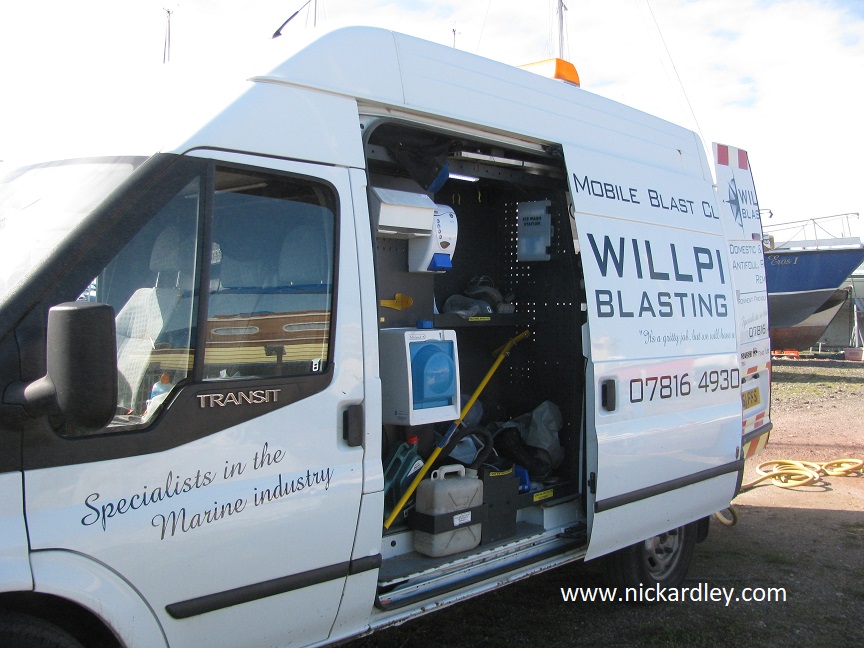
A test patch was carried out in the first instance … with a water blast loaded with sand.
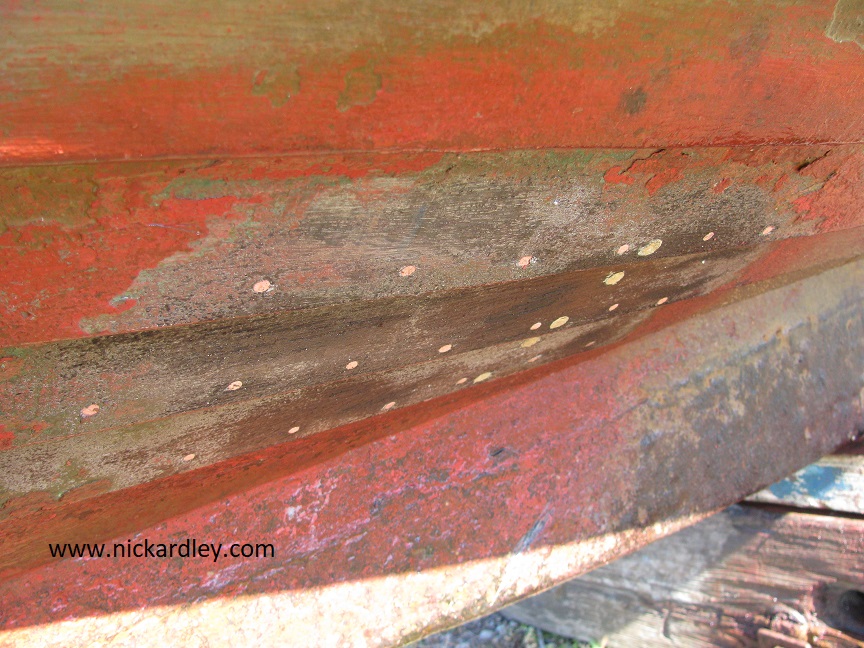
The work then got underway with the ‘crew’ taking turns each side … the woodwork has not seen the light of day since 1983!

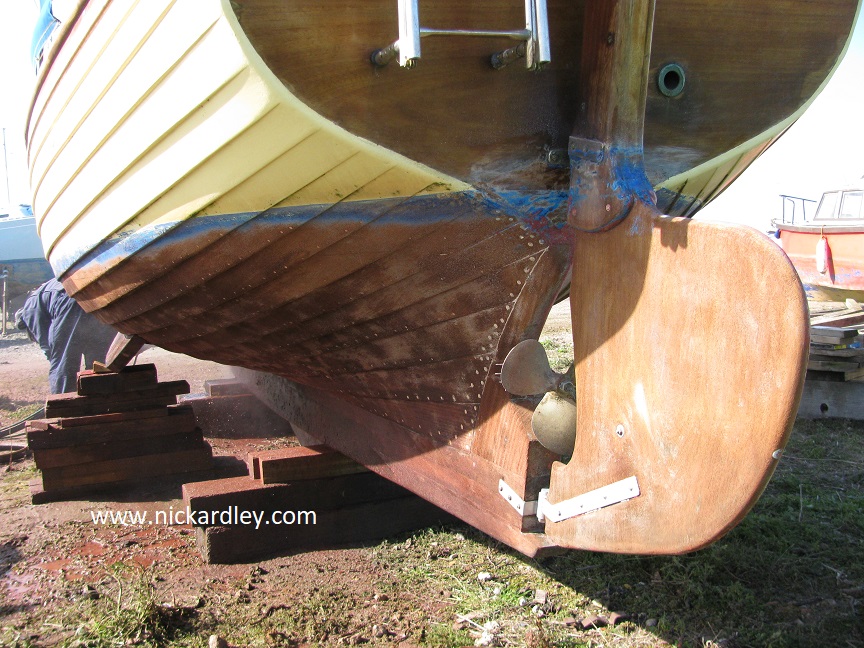
Thank you to the two Willpine boys for your attention to our clinker-built vessel’s bottom.
The initial coatings went on in the autumn of 1983 – she has never been cleaned back to bare wood since then. The blast cleaned off the surface soft wood tissue to good clean timber.
As the boat was out and her bottom needed to be painted, for protection alone, we got on with it – having moved a 42nd wedding anniversary holiday to the autumn – weather and time seemed to be on our hands, or was it!
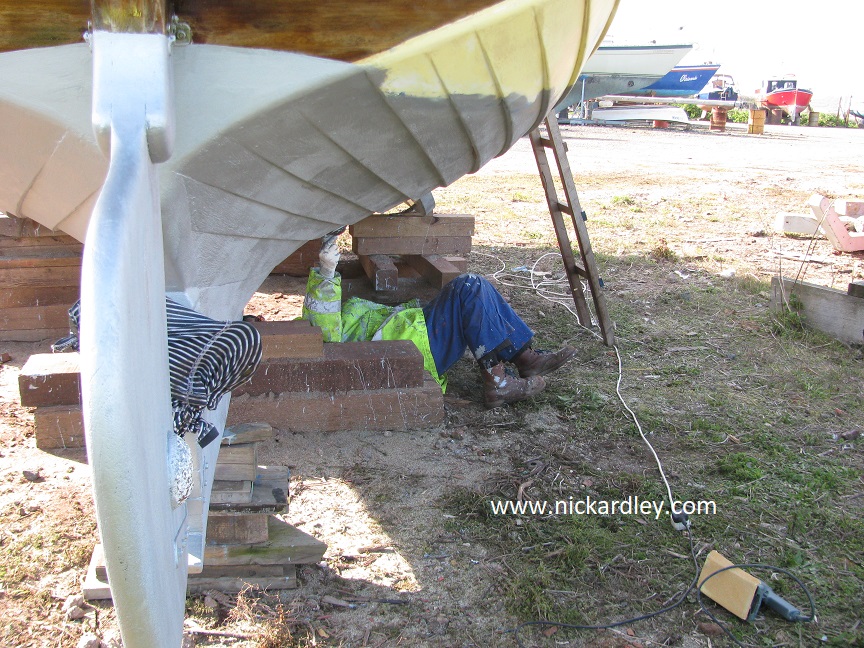
So, after leaving her to dry for two days with a warming sun and an easterly breeze coming across the saltings, she was ready for a prompt start.
First off, Christobel got beneath and checked along the lands for any paint left by ‘the blasters’ and then hard sanded to best of her ability – quite frankly, I just left her to get on with it: other things needed doing! In our elevated position above – the boat had dried quickly, but I was already beginning to worry though!

I spent the first day dealing with renewing the centre plate pivot pin which was found to be badly wasted – only two years old. I have been doing annually for some years, but moved to two. I have a feeling that my box of bolts purchased as ‘Mild Steel’ are probably builders High Tensile Bolts which are higher in carbon and a ‘label’ seems to indicate this. I remember specifically asking what sort of bolts the supplier had. A different supplier will be sought!
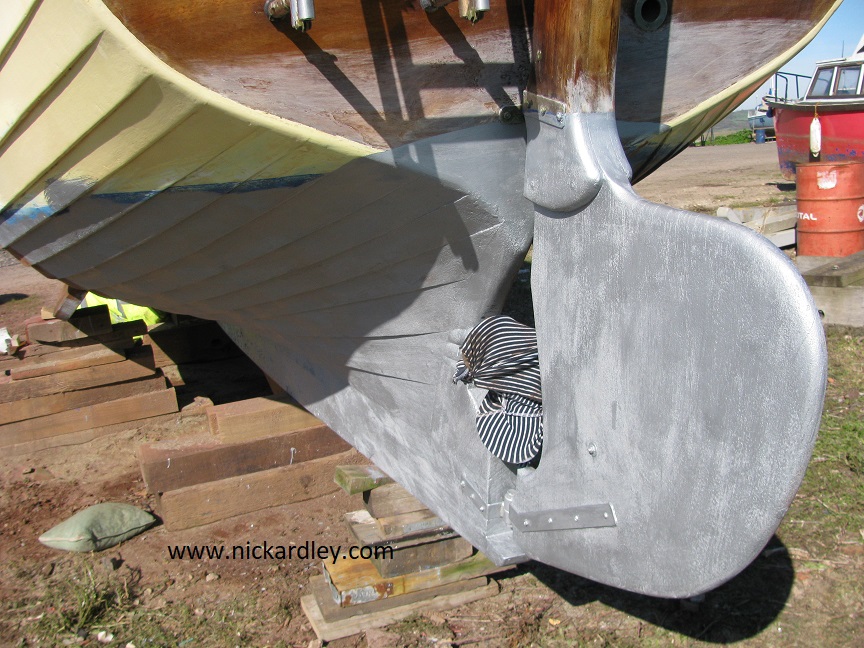
Part way into the job, restrictions on movement and work came in, and unless absolutely necessary ‘we’ were being advised not to do it. After a day off, we decided that the job needed to be finished at least: the boat was sitting in a temporary position. Our plan was to be back in the water within a week or so. I knew that being moved, at least, was going to be a priority for the boat’s safety, in the event of a complete lock-down situation.
The need to be moved was borne out by the requirement for her side chocks to be hardened each day during strong northerly and north-easterly winds over the weekend we were ready to go back in.
However, by the end of a long hard first day, Christobel had applied two coats to the bottom whilst I ‘prated’ around the topsides and transom making preps for full coatings. The topsides were hard sanded with a power sander. A number of fastener tops needed attention with cleaning off, sealing, priming and undercoating several times. With the weather the touch-up paint coats were drying in next to no time.
Note: The topsides were last fully painted in spring of 2016.
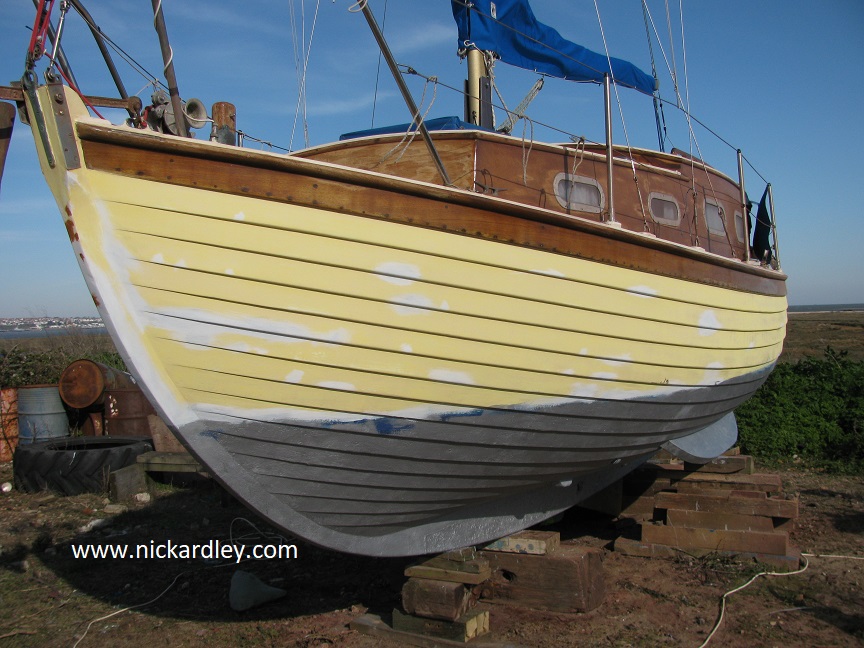
The next day, the day we had hoped to avoid, we had a day off … letting paint dry.
Back on the job, I ‘cut’ in the approximate top of the bottom red coat for Christobel to get weaving. Bless her, she carried out a check for any hollows in the primer coats and applied stripe coats where needed. Then onward with the antifouling. What a girl eh!
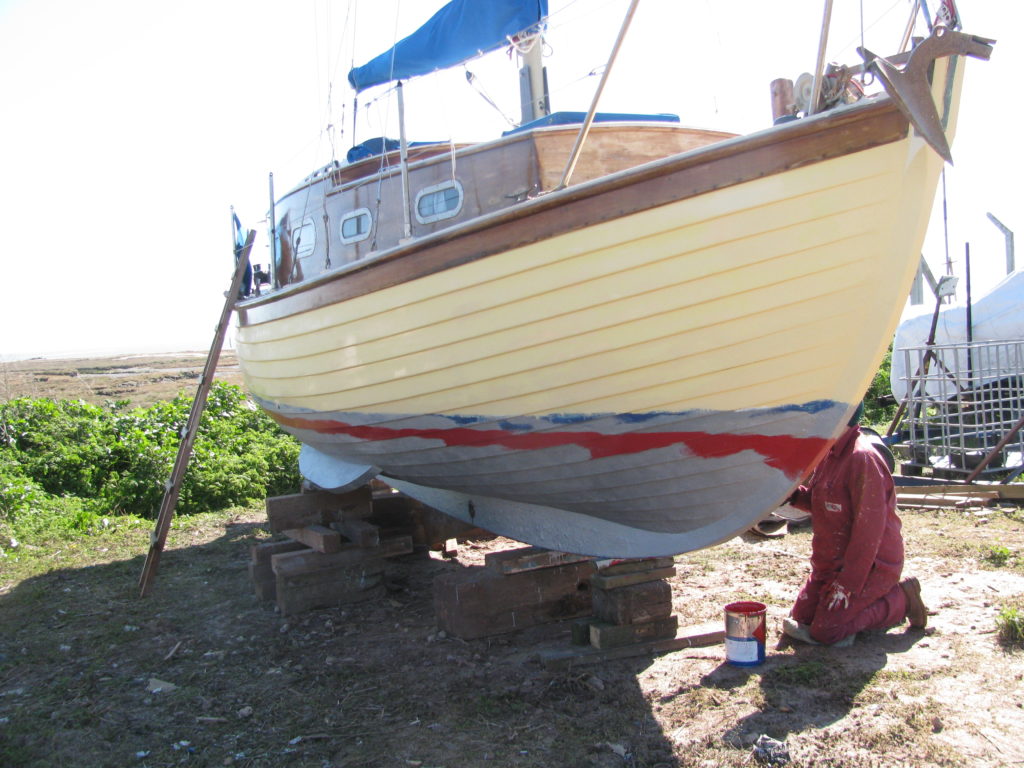
By the time I had stripe coated the ‘repaired’ areas around the topsides, the first coat of antifouling was nearing completion on the boat’s port side. Before long calls for more paint made me stand back and admire the Mate’s work…
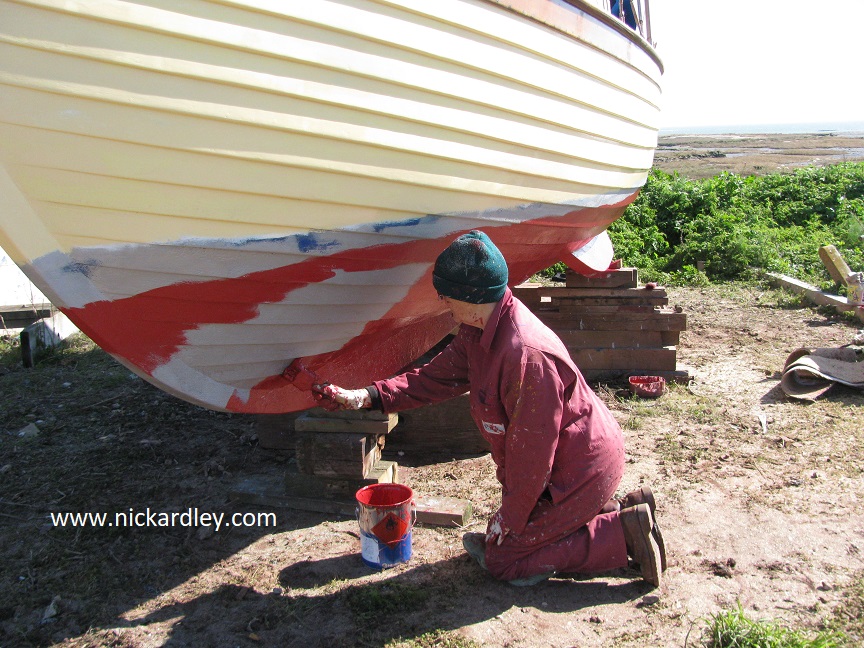
In gloriously warmish sunshine the topsides were given a finer grade sand, wiped down and given a full coat. Whimbrel was looking better by the hour.
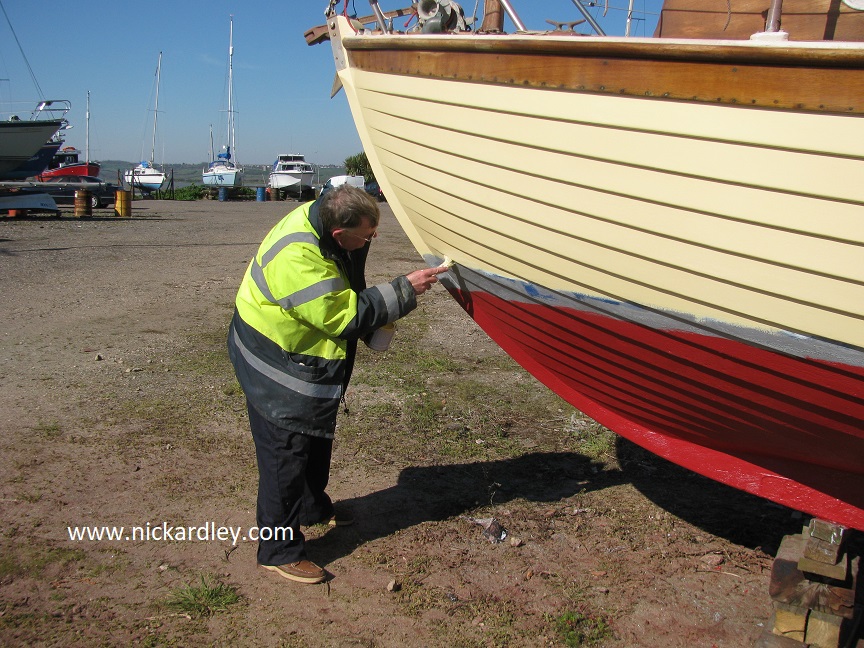
In the light of a peach of a spring sky, the sides glowed!
On the third day, Christobel was back underneath doing the last antifouling coat, before carrying out a check and stripe coating ‘hollows’…
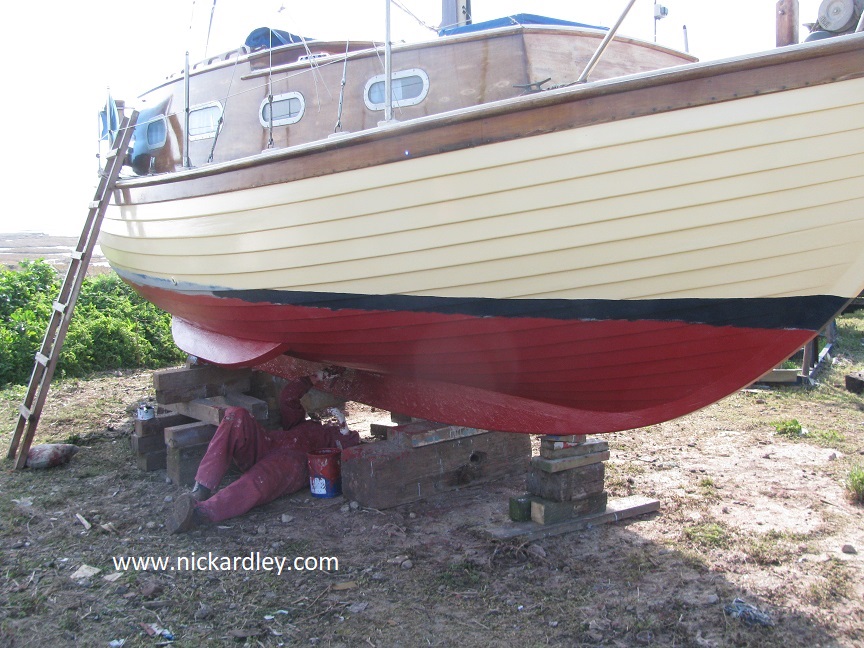
Meanwhile, I varnished the transom and got on with sorting out the boot top coating. I’ve used a hard racing boot top coating rather than the ‘normal’ stuff which washes off too easily making a mess of the paint lines and look of the boat afloat.
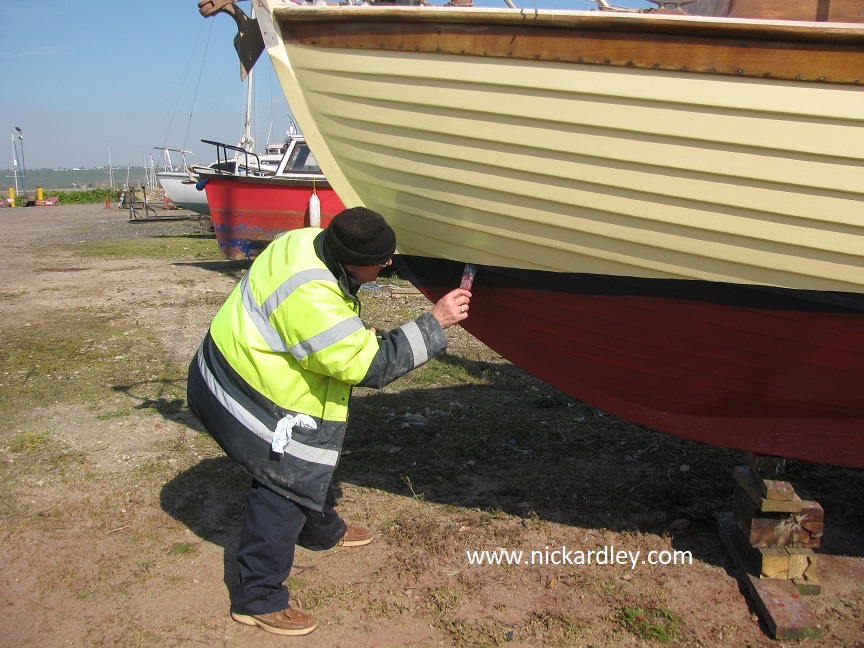
It was with a sigh of relief that I reached the end of cutting in the boot top. Due to stripping back the upper part of this by hand scraping and hard sanding and blast removal below, the line was largely lost. We laughed about the re-appearance of the builder’s original scribe markings, long deemed of little use as Whimbrel has gained added weight with her cruising use! I must say though, it wasn’t so far out…
Two shots of the finished job.
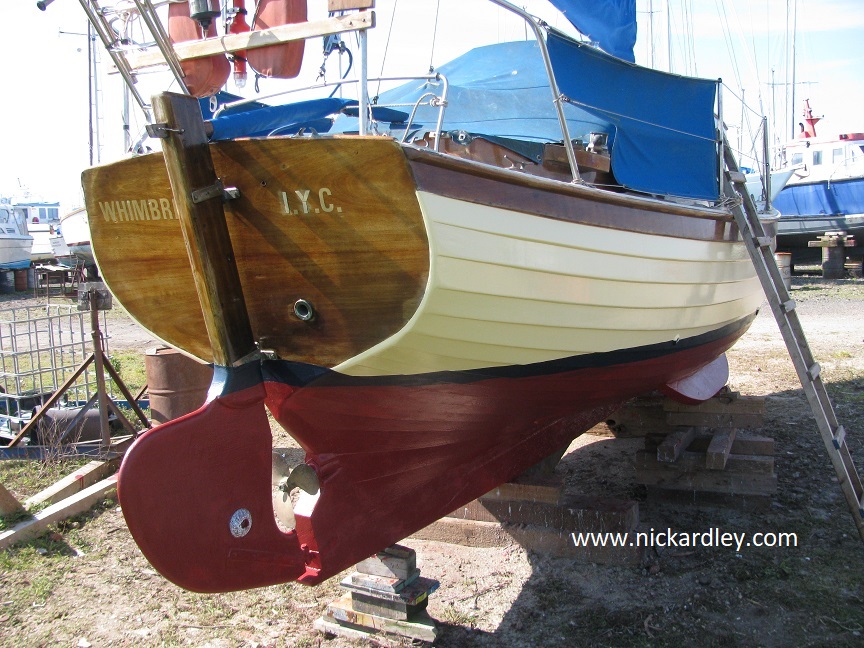
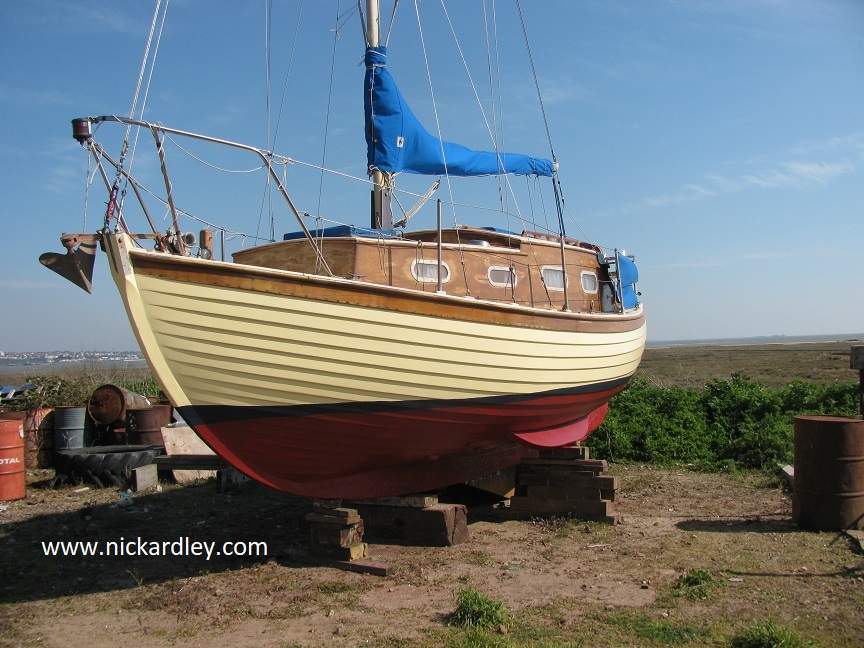
Looking as pretty as she could be, Whimbrel awaited permission to go back afloat.
There are jobs around the decks that need doing. Relatively small sections of weather damaged varnish and a coat of fresh paint on cabin tops (after a hard sand), in the main.
But, alas, these will have to wait.
Info: Willpine Blasting Ltd, Canvey Isalnd, Essex. Tel: 07816 493063
Email: cj.marine@hotmail.co.uk
